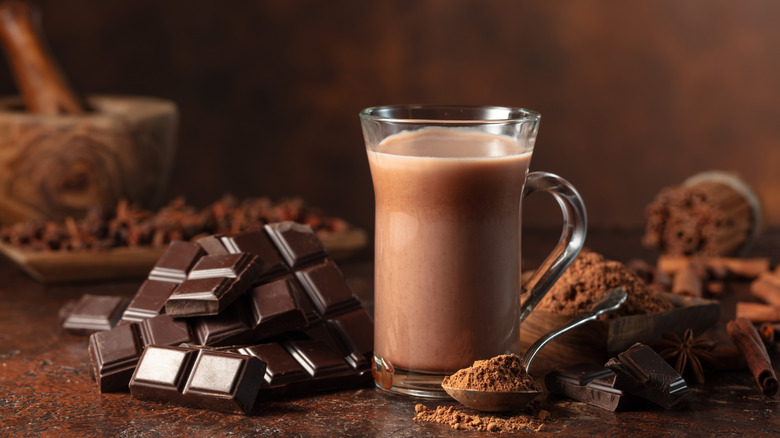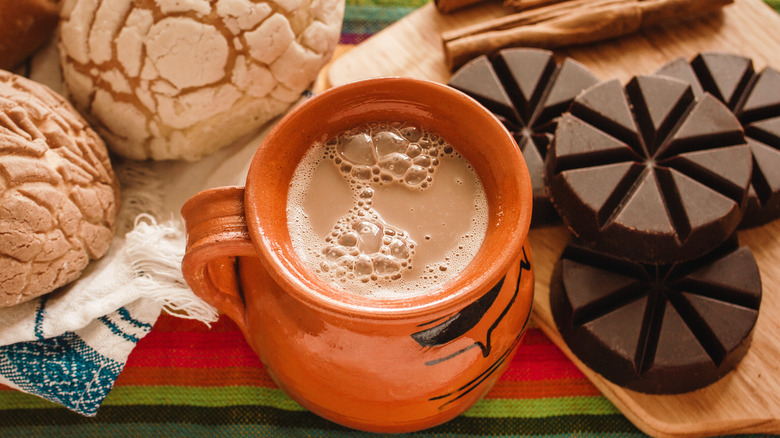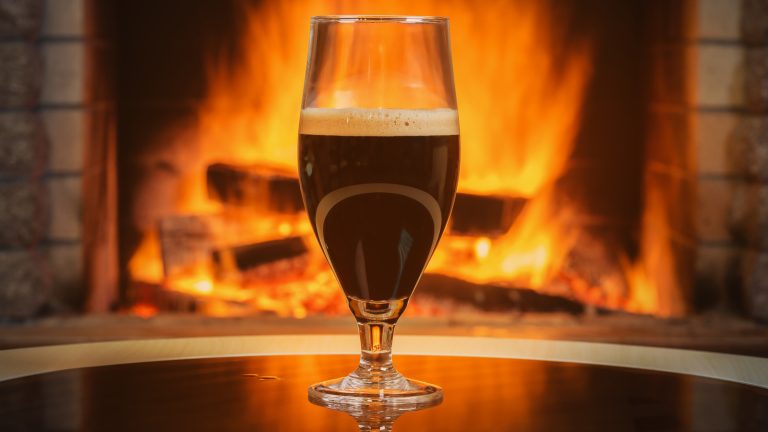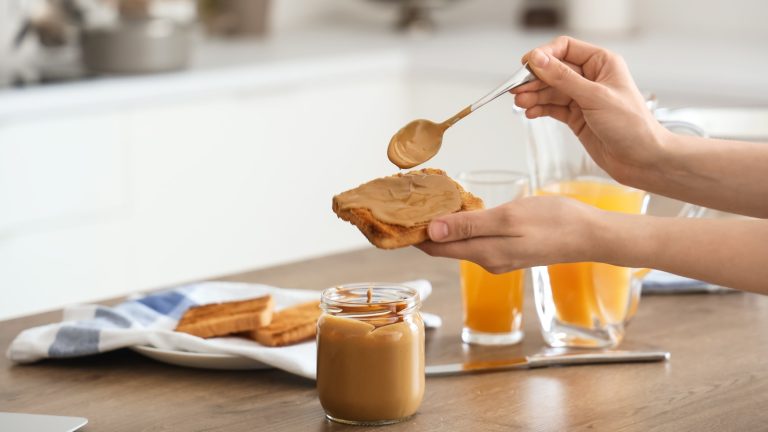We may receive a commission on purchases made from links.
Hot chocolate is a beloved beverage in so many countries, it’s no surprise that there are literally dozens of versions of the decadent drink. European versions vary from those found in the Americas — and despite geographic closeness, even the hot chocolate traditions and histories vary between the United States and Mexico. While both styles are delicious in their own ways, the ingredients, flavors, and even consistency of each differ.
The hot chocolate enjoyed Stateside, whether from a premixed sachet or homemade, is generally made with milk, cacao powder, and sugar, and topped with whipped cream or marshmallows. This results in a sweet, chocolatey drink with a relatively thinner consistency. Not all hot chocolate brands are the same — take a look at Chowhound’s ranking of popular hot chocolate brands for the best ones.
In contrast, Mexican hot chocolate, called chocolate caliente in Spanish, draws as much from its millennia-old history as it does from culturally and geographically specific ingredients. The Mayans drank a chocolate beverage over 2,500 years ago, made from ground cocoa beans, cornmeal, and chilies. Today, a key ingredient in Mexican hot chocolate is Mexican chocolate, which contains raw cane sugar and cinnamon, and has a coarser texture than the smooth bars we’re used to buying in supermarkets. The Mexican chocolate bar is broken up and then melted into either milk or water. There are plenty of variations, like adding piloncillo, or raw cane sugar, for more sweetness, or mixing in cinnamon or chili powder for some spice.
The origins and variations of American hot chocolate
Despite Latin America’s long history of drinking chocolate, it only became popular in the United States around the 17th century after it arrived Stateside from Europe. The drinking chocolate of this time was thicker and more intense, made by melting solid chocolate with no added sugar. The powdered cocoa mix that introduced so many American households to hot chocolate came much later, in the 1950s. The first of its kind was created by Charles Sanna of Sanna Dairy Engineers. Having perfected small servings of powdered dairy creamer, which his company supplied to the American army during the Korean War, Sanna found himself with a surplus of creamer and decided to make a cocoa mix with it. Much trial and error later, the iconic Swiss Miss Milk Chocolate Hot Cocoa mix was born.
Contemporary American hot chocolate, thus, is almost always milk-forward and has a thinner consistency and sweeter flavor than many of the other versions from around the world. Because of its simplicity and not being straddled by tradition, American hot chocolate is very conducive to modifications. It can be customized in myriad ways, depending on the occasion, which makes it a popular holiday season drink. You can upgrade hot chocolate by infusing milk with spices and mint. Alternatively, for a sweeter, decadent sip, mix a dollop of condensed milk into your instant hot chocolate mix.
Making Mexican hot chocolate the traditional way
There are several brands of Mexican drinking chocolate available, but by far the most popular is Abuelita Mexican Hot Chocolate Tablets, which are available as large round chocolate tablets that can be sectioned and melted into hot milk or water. Traditional raw cane sugar, piloncillo, can be added for sweetness, and where you can really experiment with chocolate caliente are the spices. As the hot chocolate simmers, you can add cinnamon, cloves, star anise, and of course, a pinch of cayenne pepper. While the drink is traditionally made with water, you can use milk or a mix of both. Mexican hot chocolate is also served frothy, which was traditionally achieved with a wooden whisk. You can now use a hand mixer for the same effect. Of course, as is the case with American hot chocolate, the Mexican counterpart is also sometimes made with instant hot chocolate mix instead of melting solid chocolate.
Champurrado is another hot chocolate drink from Mexico that is part of a broader category of maize-thickened beverages called atole. The drink goes back to the pre-Hispanic period in Latin American countries, where it was used as a versatile and nutritious drink flavored with popular ingredients of the time, such as cacao and spices. Contemporary champurrado is made by adding masa harina to the ingredients you’d otherwise use to make Mexican hot chocolate, forming a thicker, more richly flavored version of the drink. Whether you make chocolate caliente or champurrado, remember that thick drinks have much higher heat retention, so sip carefully even if your cup has been sitting for a while.







